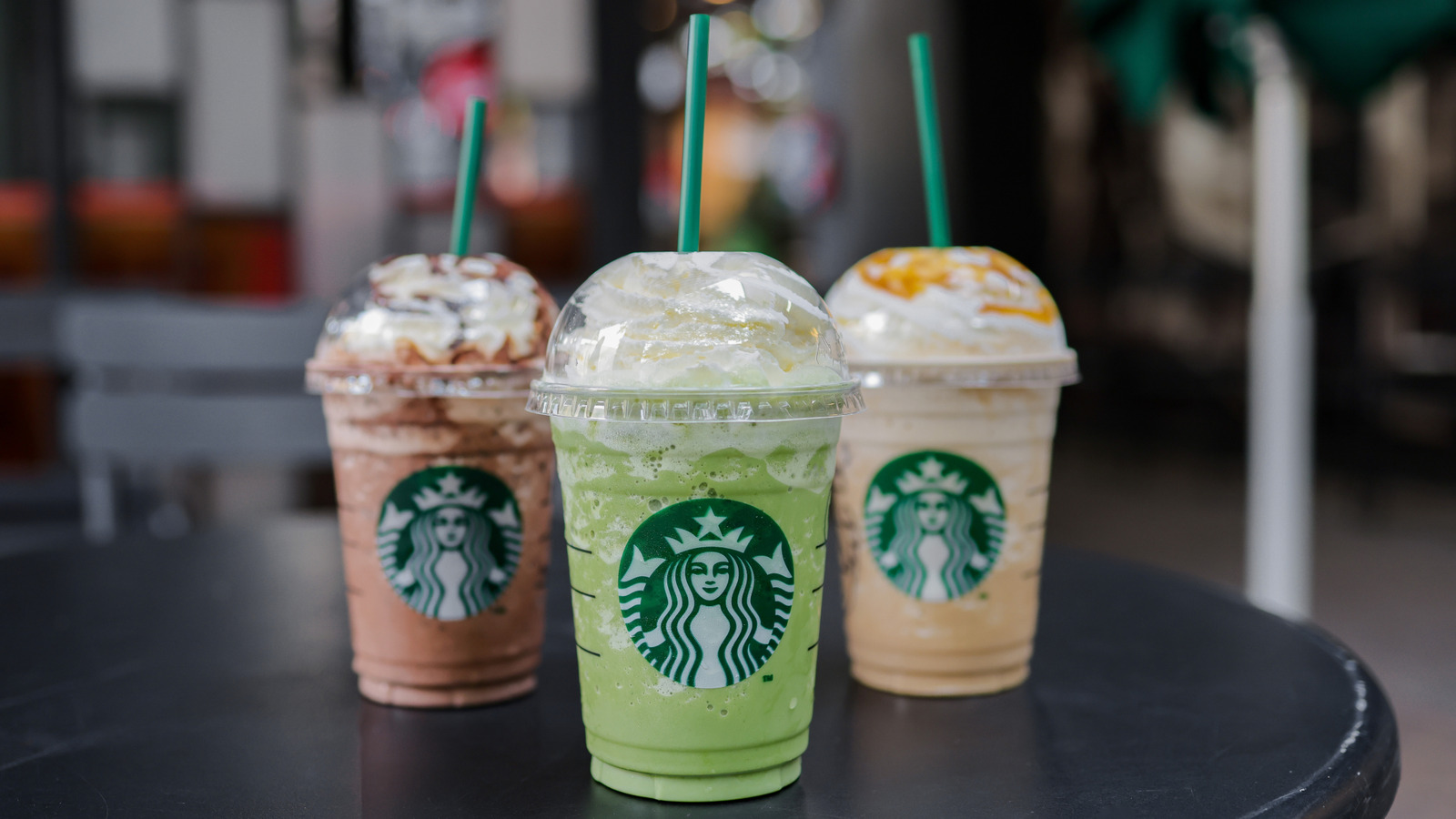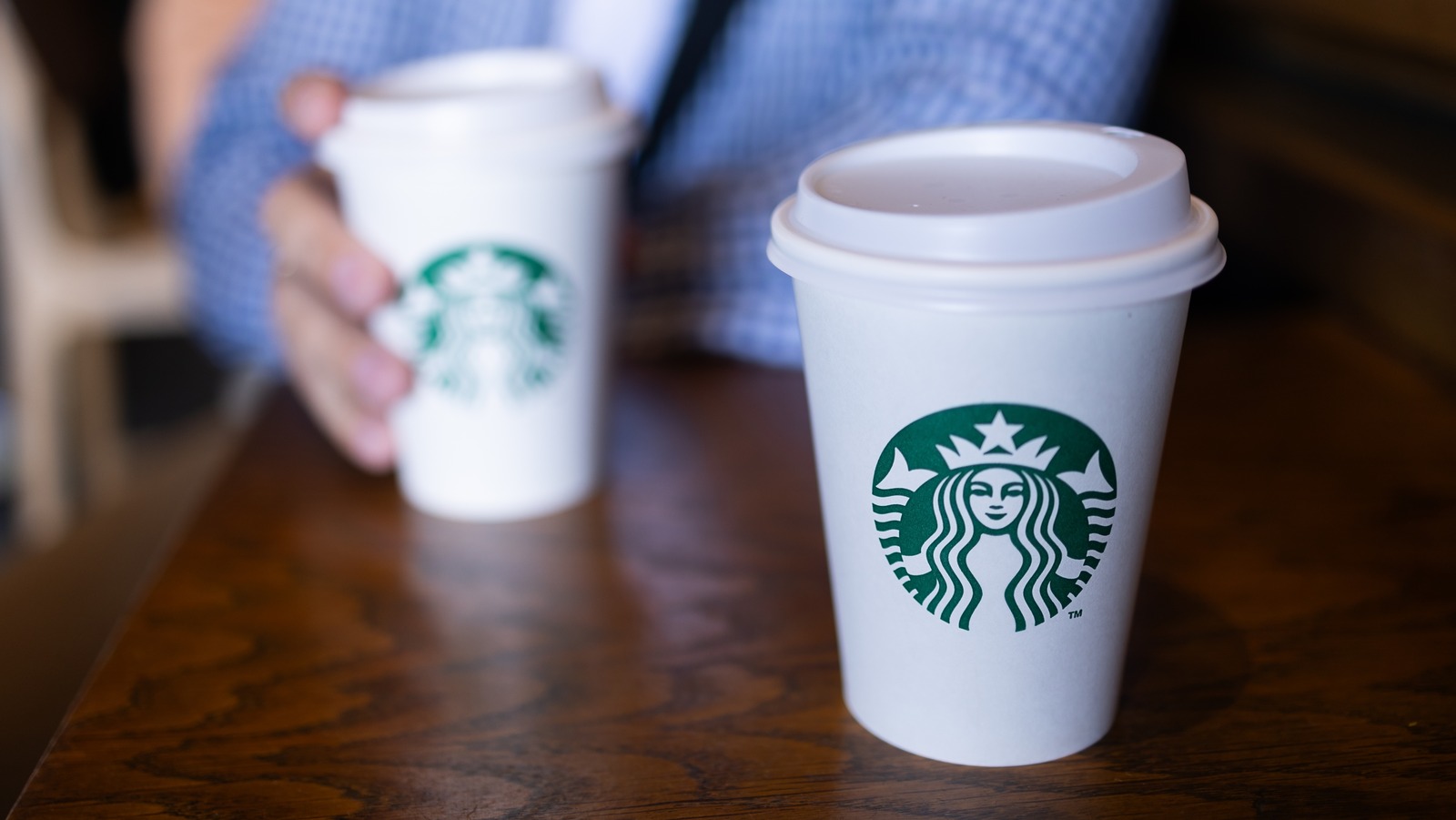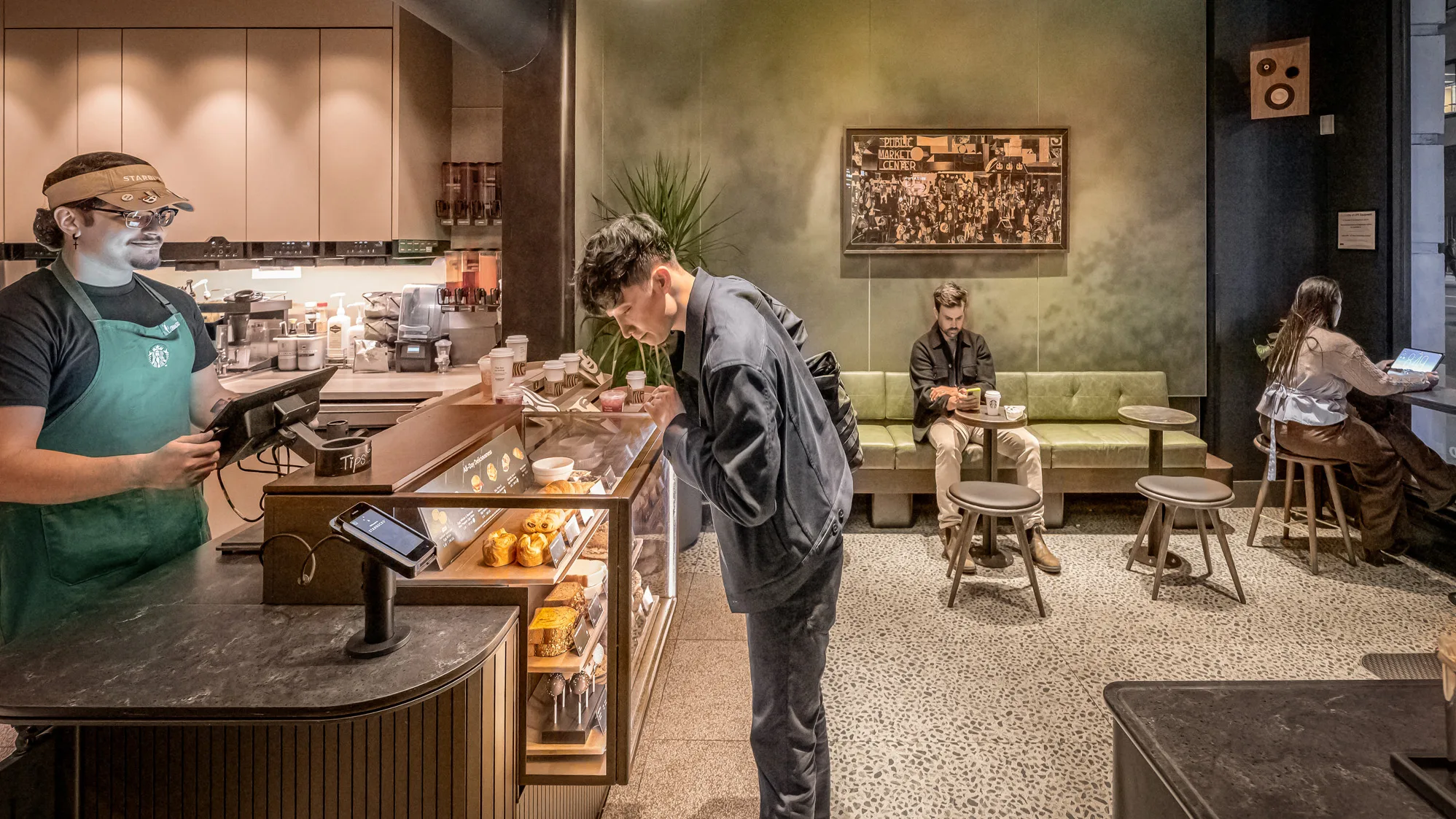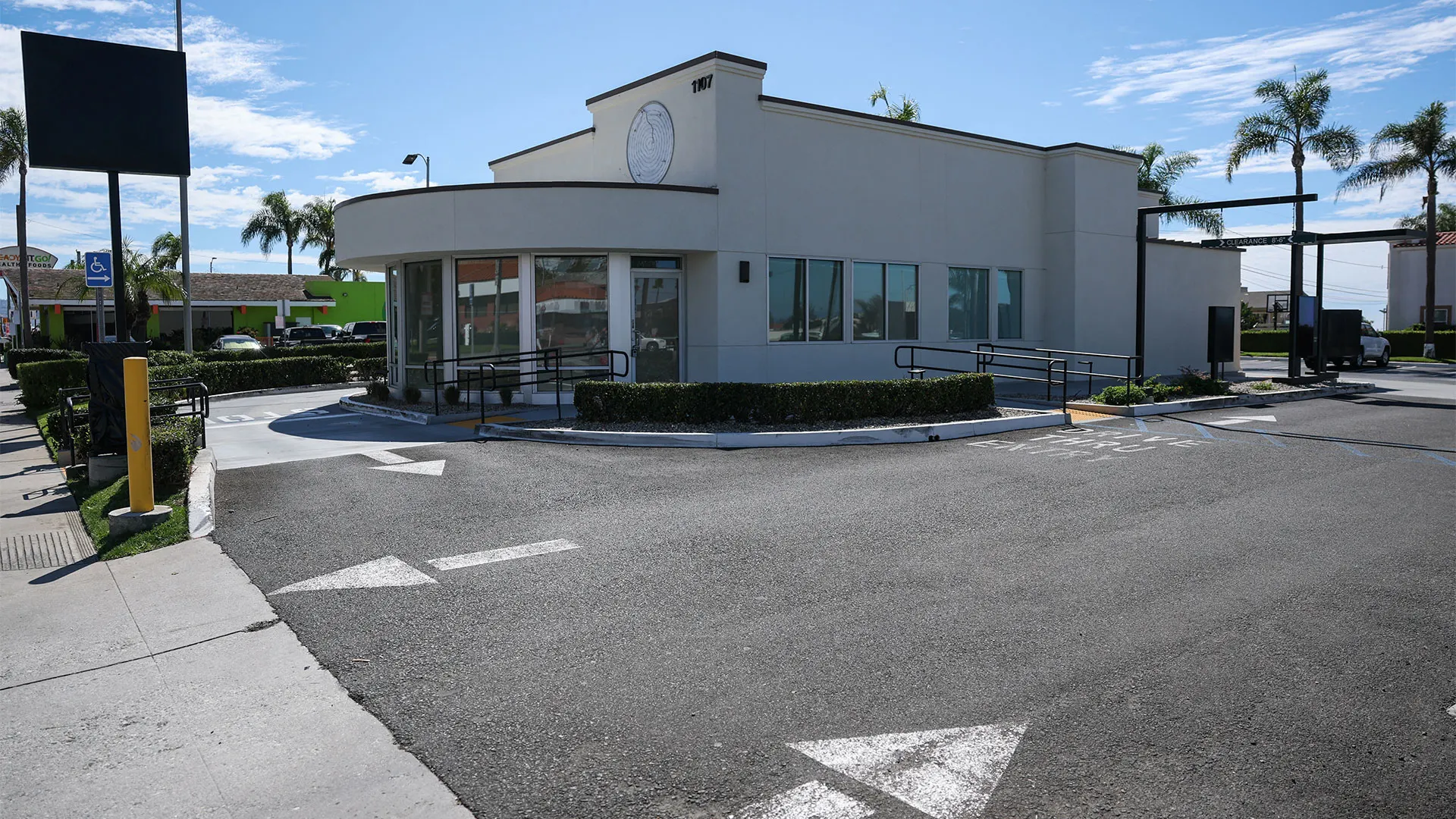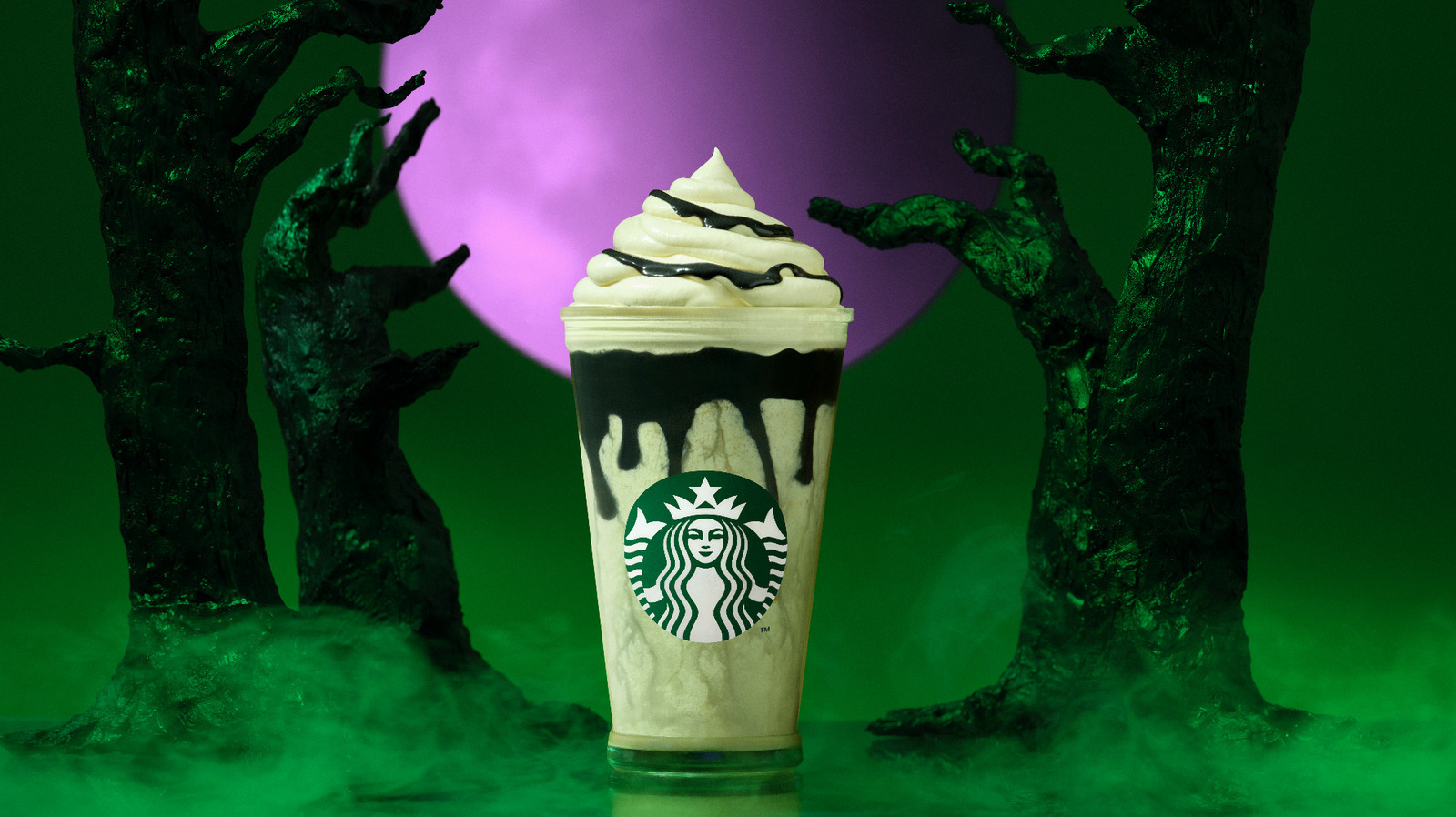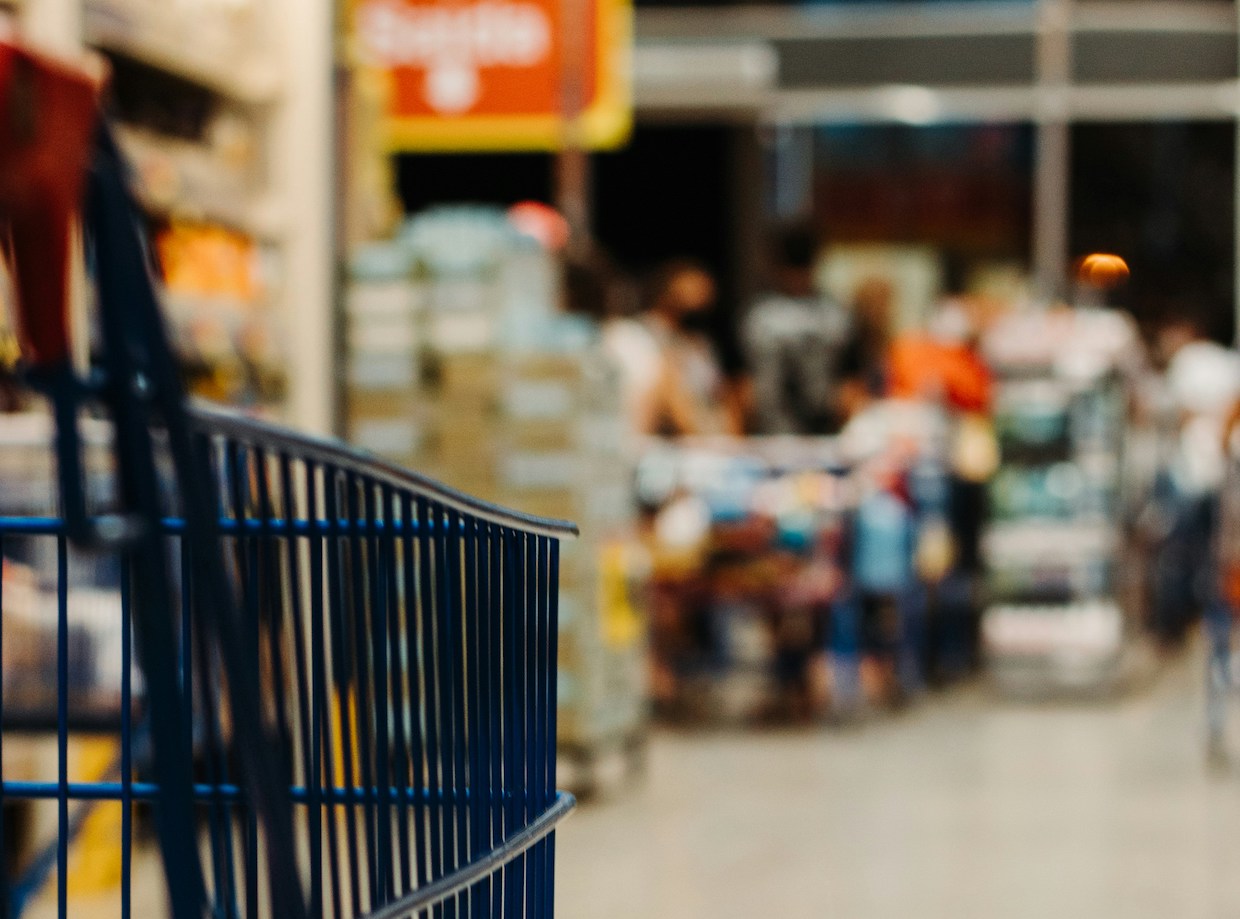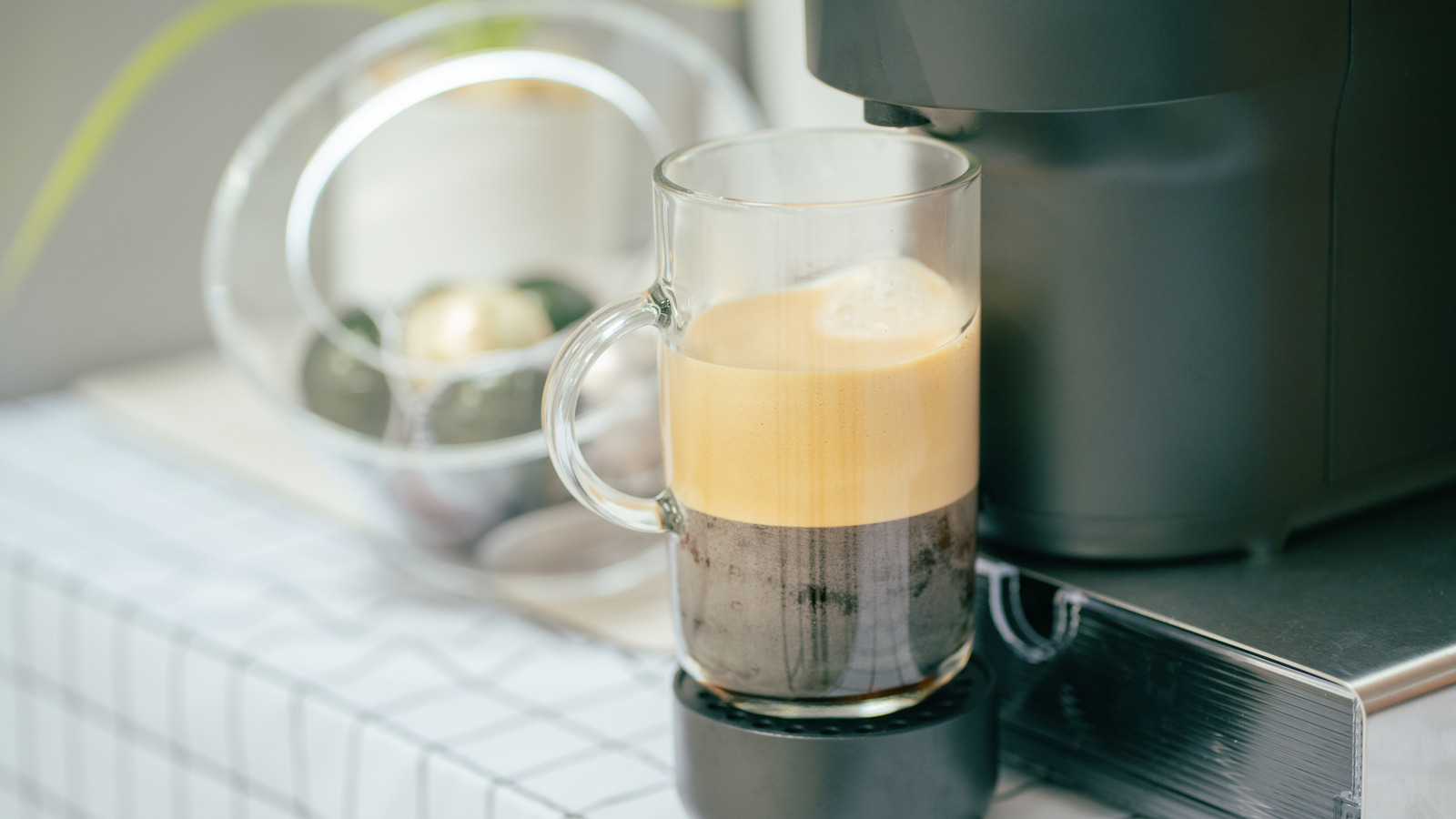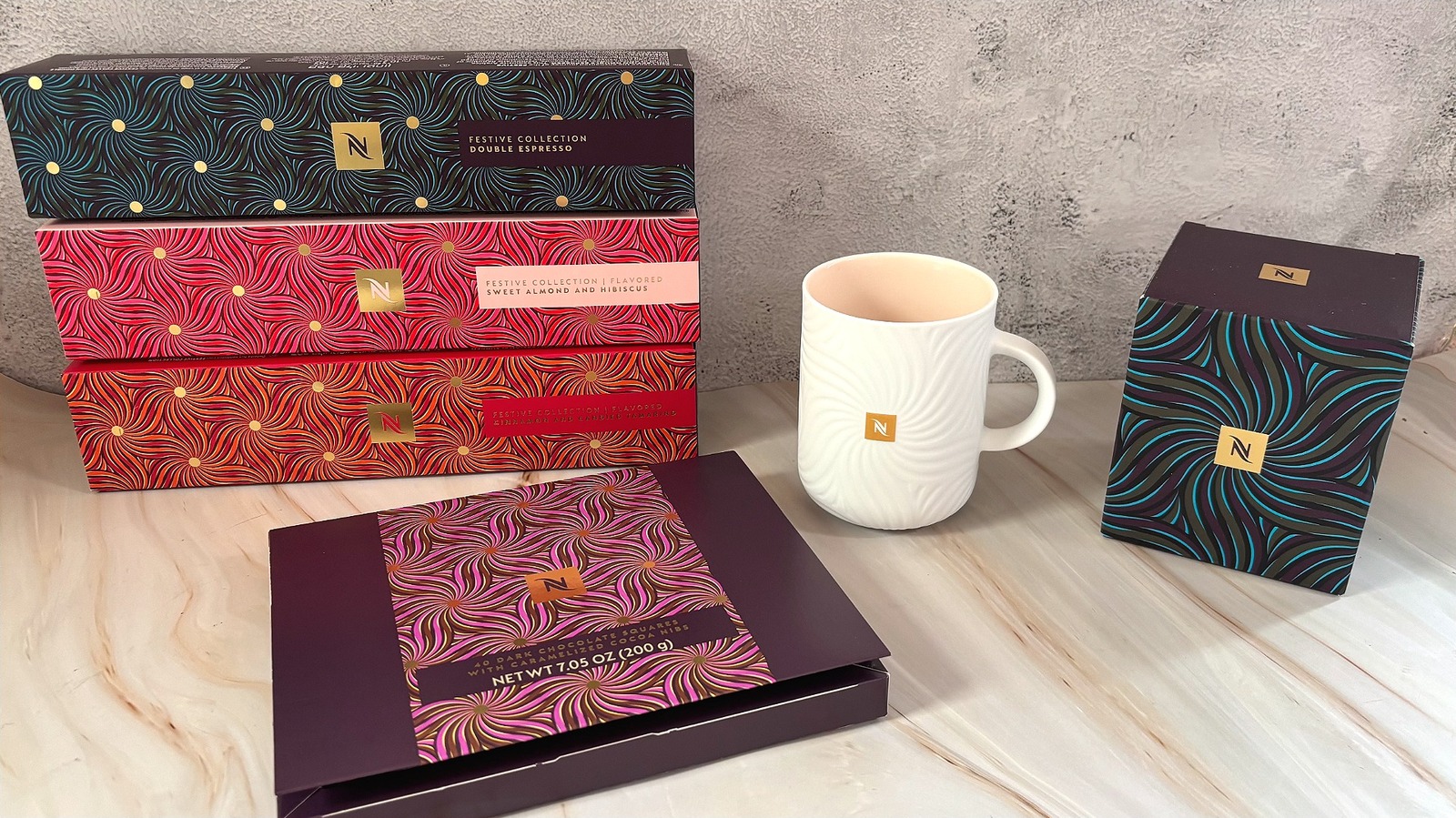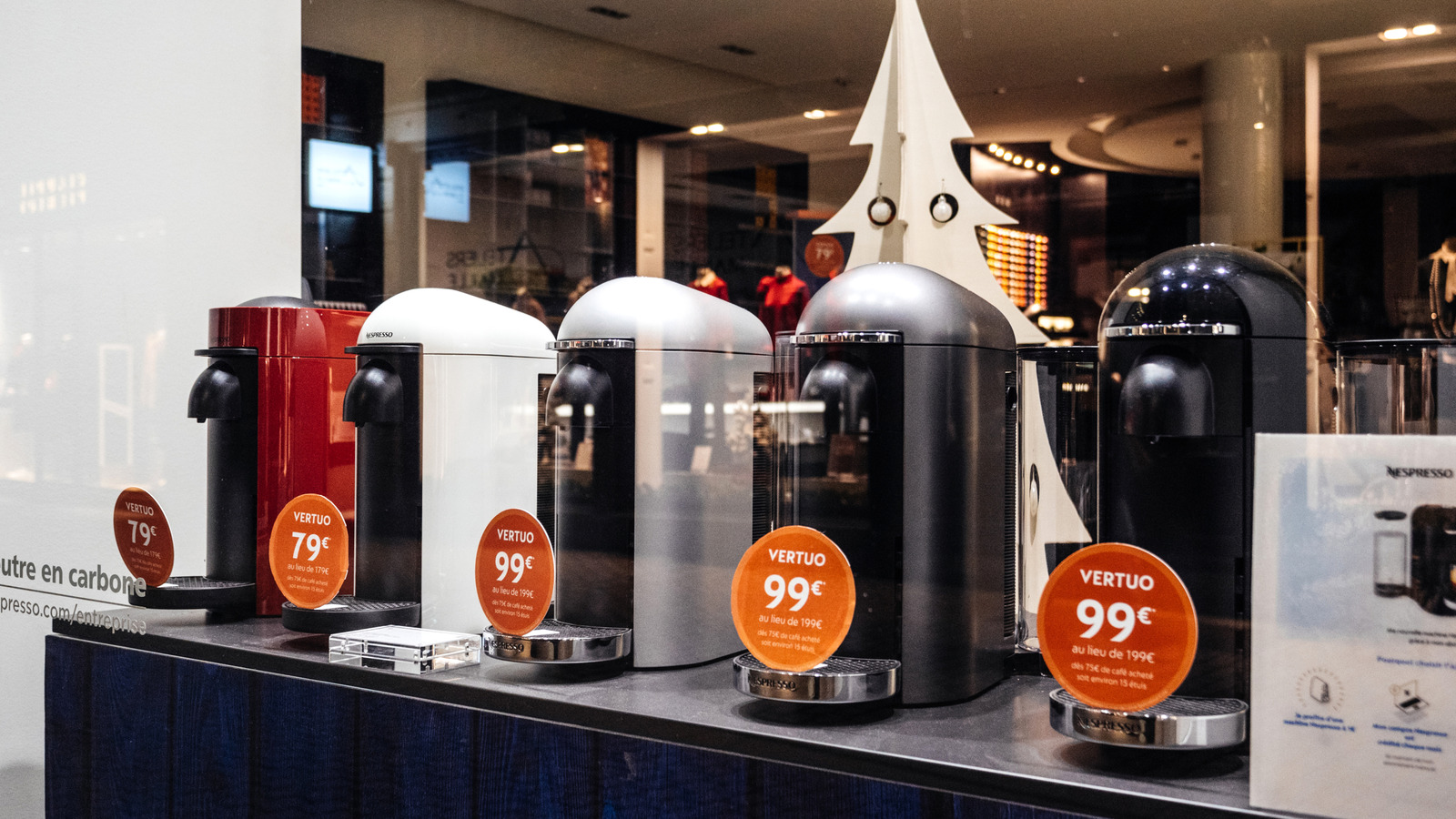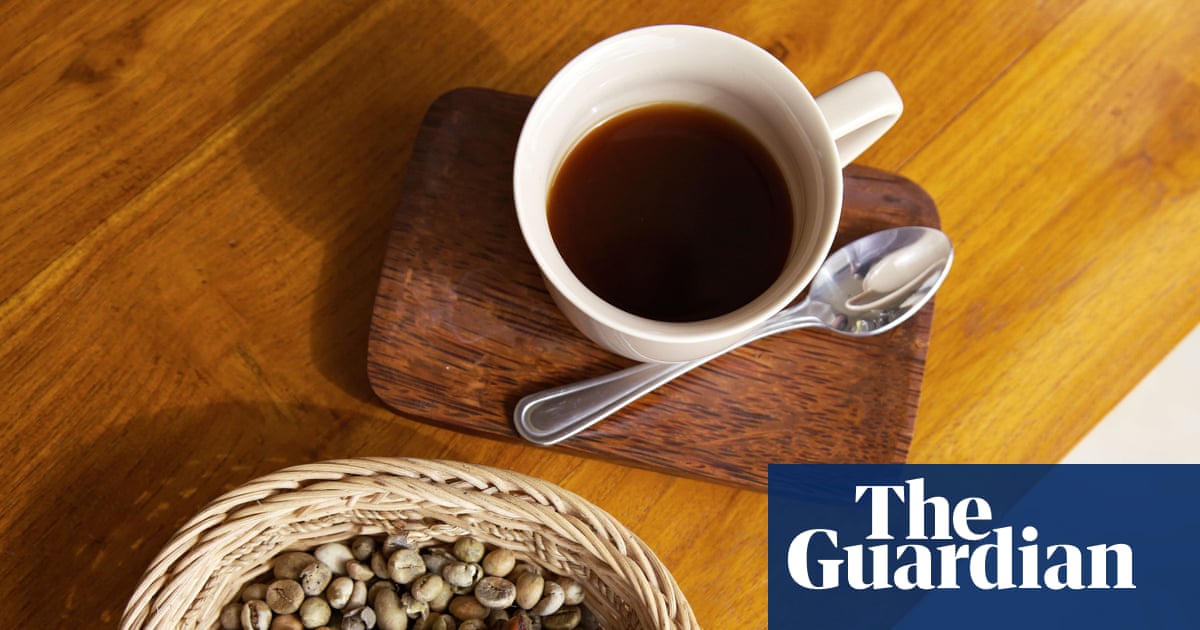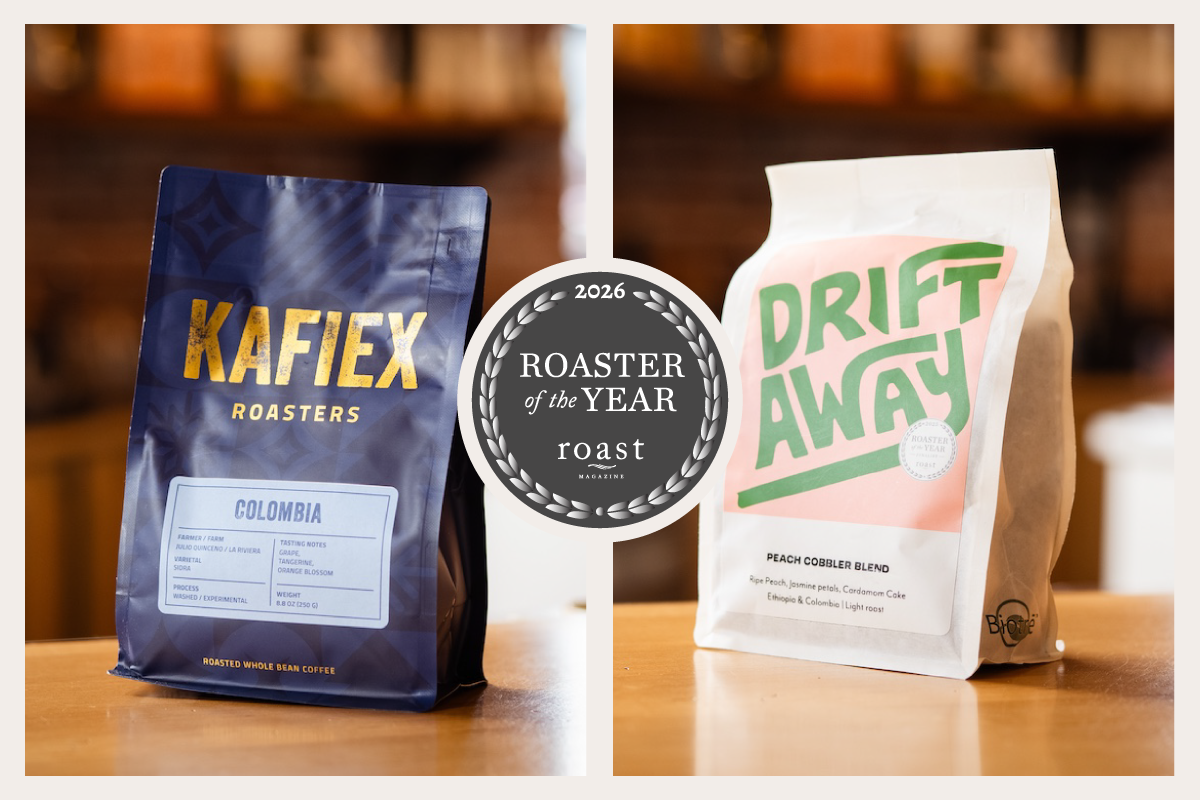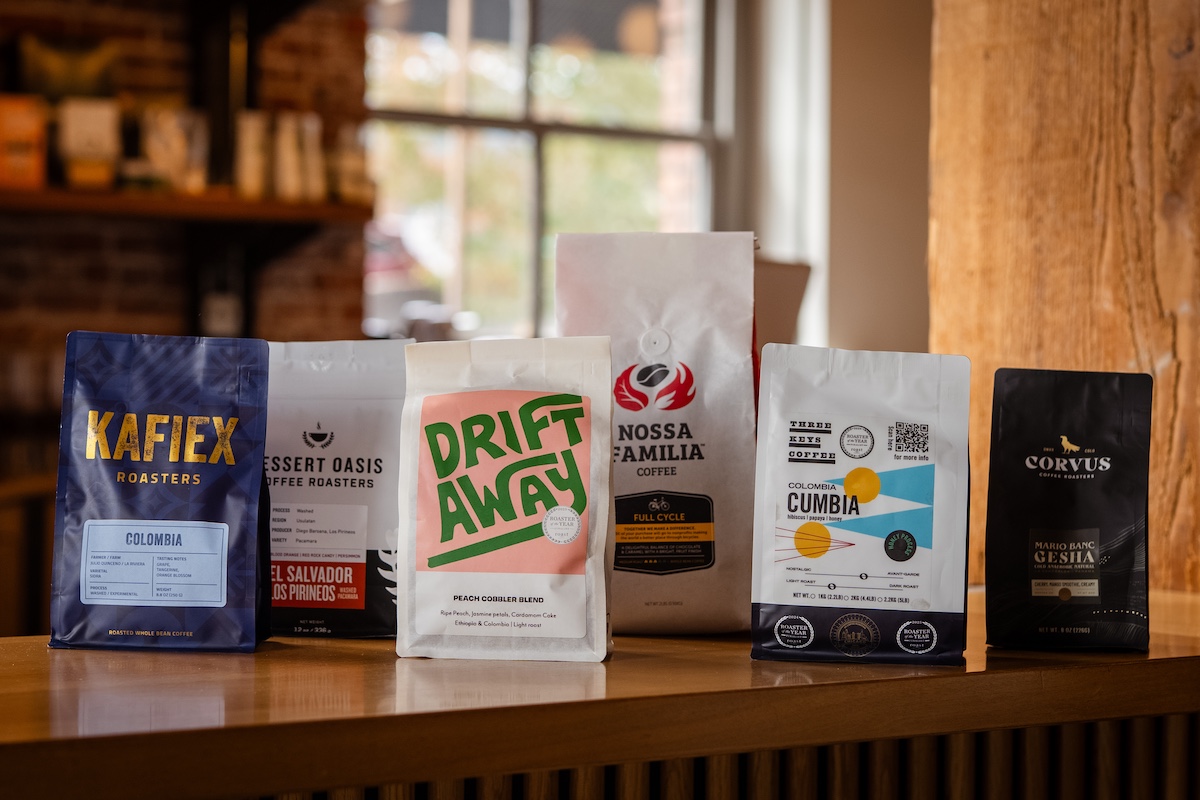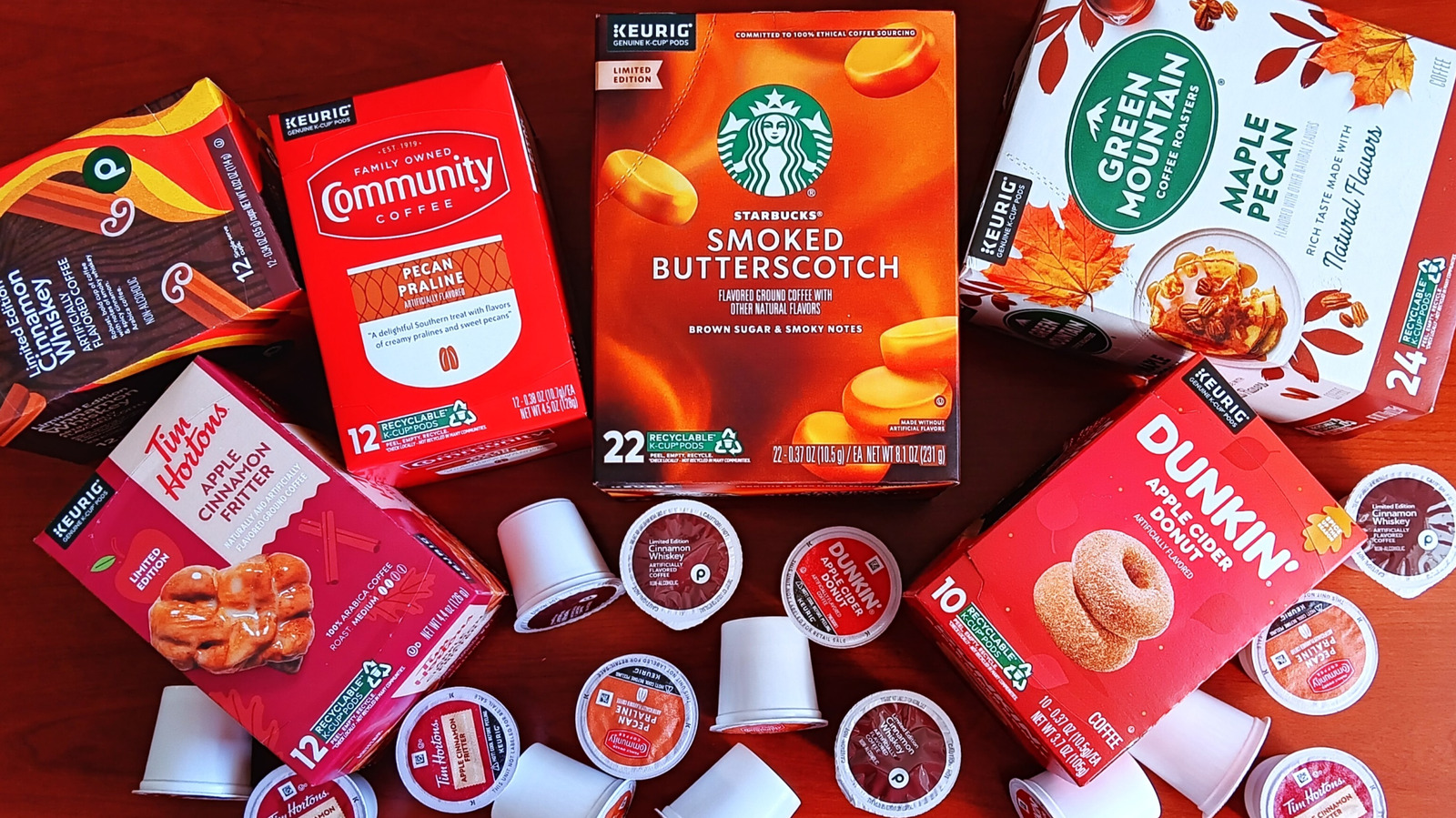Coffee
Coffee
[ follow ]
#starbucks #specialty-coffee #coffee-prices #tariffs #coffee-tasting #fall-flavors #coffee-industry #nespresso
fromSFGATE
6 days agoSan Francisco's most beautiful coffee shop just opened
In moments of urgency, it can be challenging to keep a grip on the rhythm of ordinary life. That's one of the many reasons we publish Fogcutter, SFGATE's weekly column of events, shoutouts and slices of life. Every Sunday, we write about hyperlocal art shows, concerts and cafes. We hope to provide an oasis of quiet when the headlines get loud - not to offer an escape, but some grounding.
Coffee
fromTasting Table
5 days agoThe Popular Tea Latte That Comes Alive With Pumpkin Spice - Tasting Table
Cooler weather means warmer beverages, and while pumpkin spice is typically the trendy taste of fall, there's room for all autumnal flavors. If you feel moved to (pumpkin) spice up your favorite hot drinks with these warming seasonings, the London Fog or Earl Grey tea latte makes an unexpected, but phenomenal pairing. If ordering the beverage from a Starbucks, you can politely request the addition of pumpkin spice syrup to your drink for a small fee.
Coffee
Coffee
fromDaily Coffee News by Roast Magazine
5 days agoMahlkonig Launches Xenia Home Espresso Machine and E64 WS Grinder
Mahlkönig launched the Xenia dual-boiler home espresso machine and E64 WS grinder with Grind-by-Sync integration for precise temperature, pressure, flow, and weight-controlled extraction.
Coffee
fromApartment Therapy
20 hours agoI Tried 10 Fall Coffee Creamers - The $4 Winner Tastes Like Dessert (I'm Using It Every Morning)
Five fall coffee creamers deliver cozy, spiced sweetness and creamy, smooth texture, highlighting plant-based and dairy options like cinnamon, cookie butter, and oatmeal cookie.
fromABC7 Los Angeles
3 days agoHow a viral Bay Area beverage made the coffee world go bananas
When Frank Nguyen launched Academic Coffee in downtown San Jose nearly a decade ago, his goal was simple: bring a great neighborhood cafe to a city that didn't have many. He couldn't have imagined that nine years later, his small-batch, from-scratch approach would make him a national trendsetter -- all thanks to a banana. Last October, Nguyen and his team at Academic Coffee introduced what would become their signature creation: the Banana Cream Pie Latte.
Coffee
fromTasting Table
12 hours ago4 Starbucks Coffee Blends You Should Drink Cold And 3 You Shouldn't - Tasting Table
No matter what the weather's like outside, sometimes you just crave a creamy, fully dressed-up iced coffee. Or, maybe you just want to drink your iced coffee black. Whatever your particular hankering may be for, there's no denying that sometimes iced coffee just hits different - it can tickle a midafternoon craving and scratch a certain itch that hot coffee can't seem to reach. However, not all iced coffees are created equal.
Coffee
fromSFGATE
3 days agoThis part of SF is 'weirdly free of cafes.' Dave Eggers wants to fix that.
Acclaimed Bay Area author Dave Eggers' plans to transform the long-vacant Pier 29 into a hub for artists have now expanded to include coffee. Art + Water, a new arts nonprofit from Eggers and San Francisco artist JD Beltran, is expected to create free studio space for artists, a gallery space and a pop-up cafe from roaster Mokhtar Alkhanshali in the sprawling warehouse, Eggers shared in a post on McSweeney's.
Coffee
fromA Couple Cooks
3 days agoHow to Make Espresso at Home (5 Methods) At Home
Not only is it delicious on its own, you can make a whole host of espresso drinks like a good latte, cappuccino, flat white, and macchiato,. Turns out, making espresso is more approachable than you think! As a homemade coffee lover, I've tested all the main brew methods and I'm sharing everything I've learned. From traditional espresso machines to French press techniques, Moka pots, and even portable options, there's a method that works for your budget, kitchen space, and skill level.
Coffee
fromState of the Planet
1 day agoA Whole-Systems Investment Approach for the Coffee Sector and Beyond
At Climate Week NYC, across a wide range of topics from finance to law, energy to food, infrastructure to conservation, one message rang clear: We need more collaboration, particularly across diverse stakeholders. This message is nothing new. If you are engaged in environmental or societal issues, you would most likely agree that no single actor or sector has the capacity, incentive or mandate to truly address the systemic problems we currently face.
Coffee
Coffee
fromYanko Design - Modern Industrial Design News
3 days ago7 Best Home Upgrades For Millennials Who Finally Have Disposable Income - Yanko Design
Design-conscious millennials prioritize multifunctional, museum-quality home upgrades that combine minimalist aesthetics, technological sophistication, and thoughtful sustainability.
fromApartment Therapy
6 days agoI Tried Chobani's New Holiday Coffee Creamer, and It Tastes Like My Favorite Dessert
At first, having hundreds (no exaggeration) of my favorite flight snack at my disposal was exciting, but even I wasn't foolish enough to try to eat them all myself. You'd think I'd be sick of the taste after having my own little speculoos warehouse in my pantry for months, but that cinnamon sugar combo will always have my heart. That's why when Chobani launched its Cookie Butter Coffee Creamer, I had to try out.
Coffee
fromLos Angeles Times
1 week agoTwo forces pushing coffee prices higher: climate impacts and trade policy
"There's still the climate issue," said Fernando Maximiliano, coffee market intelligence manager at financial-services network StoneX. "These tariffs, they're an additional layer, but we can't ignore the main, structural factor, which is the tighter supply."
Coffee
fromEater Portland
1 week agoThe Best Places to Enjoy Locally Roasted Artisan Coffee in Bend
For a time, Bend had the highest number of coffee roasters per capita in the contiguous United States (since surpassed by Portland). These local roasters not only search for great beans but have spent years developing relationships with the growers. As Stewart Fritchman, owner of Bellatazza, describes it, "I'll spend hours with the plantation owners in Guatemala. We're not talking about the beans, we're discussing how the family is doing, like if Uncle Juan had his surgery yet."
Coffee
fromTasting Table
1 week agoThe Supreme Trader Joe's Coffee Creamer Customers On Reddit Can't Stop Raving About - Tasting Table
The brown sugar oat creamer is vegan, dairy-free, and gluten-free, accommodating most dietary restrictions and preferences. Plus, says one Reddit user, "The calories for this type of product [are] also lower than usual." Another Redditor proclaimed, "This is my favorite creamer and the best part is it lasts in my house for [three] coffee drinks because you don't need to use a lot."
Coffee
fromYanko Design - Modern Industrial Design News
1 week agoThis LEGO Moka Pot Might Be the Most Italian Thing You'll See All Day - Yanko Design
Italians do love their coffee, and any true-blue Italian will tell you that the best way to get your coffee fix isn't a pour-over, it isn't a French Press, and it sure as hell isn't those instant coffee mixes... it's a Moka Pot. Invented in 1933 by Bialetti, this pot is now practically a standard fixture in every Italian household.
Coffee
fromFood & Beverage Magazine
1 week agoAmerican Airlines Partners with Lavazza to Elevate Inflight and Lounge Experience with Premium Coffee - Food & Beverage Magazine
For the first time in the airline's history, American customers will enjoy a consistent, premium coffee experience both on the ground and at 30,000 feet: a strategic move that reflects the growing importance of hospitality excellence in today's competitive travel landscape. A Coffee Revolution Takes Flight Starting in early 2026, passengers across all American Airlines cabins will savor Lavazza's premium coffee blends, while travelers relaxing in Flagship® and Admirals Club® lounges will enjoy the same elevated experience.
Coffee
Coffee
fromDaily Coffee News by Roast Magazine
2 weeks agoFrom Massachusetts, Wavelength Coffee Signals Sustainability
Wavelength Coffee launches with sustainability-focused roastery operations, solar power, recycling, electric roasting, steel can packaging, and impact-labeled coffees sourced from diverse importers and producers.
Coffee
fromDaily Coffee News by Roast Magazine
2 weeks agoBrazil Study Promotes Closed Fermentation to Boost Quality of Unripe Coffees
Controlled self-induced anaerobic fermentation (SIAF) converts under-ripe Arara arabica cherries into specialty-quality coffee by improving sensory profiles and increasing market value.
fromDaily Coffee News by Roast Magazine
2 weeks agoFreshBrew Acquires White Coffee's Licenced Coffee Business
FreshBrew - which runs six 500-pound Probat machines at its plant in Houston - said it "will secure ownership of multiple licenses, enabling the company to develop, produce and market coffee for major brands with established market presence." The company said the deal will complement its existing private-label business, expanding operations to produce approximately 150,000 pounds of coffee per day. The company also offers a broad range of packaging, tea, extracts and cold brewing solutions, in part through its recent $10 million manufacturing expansion.
Coffee
fromTasting Table
2 weeks agoReview: Dunkin's Candy Bar Lattes Are A Mixed Bag Of Treats - Tasting Table
If a basic vanilla or hazelnut latte doesn't suit your fancy, then Dunkin' has a new seasonal beverage on its lineup called the Candy Bar Signature Latte. This concoction features a few flavor elements, including chocolate, toffee, pretzel, and peanut butter; there's also espresso, whipped cream, mocha drizzle, and, as if that weren't enough, crumbled candy bar pieces to top it all off.
Coffee
fromBon Appetit
2 weeks agoThe Best Decaf Coffee Subscriptions for an Afternoon Cup that Won't Keep You Up
Whether you're a lifelong coffee drinker or someone trying to dial back their caffeine intake, you know the pain of craving a piping cup of Joe when it's simply not the time. Maybe it's late in the day, or maybe you're trying to wean yourself off that heart rate-spiking buzz. That's where decaf comes in. It's a great-and often overlooked-option that still satisfies that ritualistic morning (or afternoon) urge without the jitters.
Coffee
Coffee
fromTasting Table
2 weeks agoStore Your Nespresso Pods (And Machine) Aesthetically With This Unlikely Ikea Find - Tasting Table
The IKEA Elloven monitor stand can be repurposed to hold a Nespresso machine and Aeroccino while concealing about 85 OriginalLine pods in its drawer, saving counter space.
fromDaily Coffee News by Roast Magazine
2 weeks agoCropster Acquires Korean Roaster Software Maker Firescope
The acquisition advances a strategy outlined when European growth investor Verdane took a majority stake in Cropster in October 2024, signaling an intent to expand internationally through mergers and acquisitions. Cropster has not publicly disclosed the financial terms of the Firescope acquisition, but a company announcement today said further acquisitions are planned as Cropster deploys a "sizable war chest" from Verdane.
Coffee
fromDaily Coffee News by Roast Magazine
2 weeks agoFinding Coffee in Chaos: Strategies for Roasters as US Tariffs Sink In
In a room full of coffee roasters last week, longtime green coffee trader Mark Inman asked for a show of hands. How many people started buying green coffee professionally within the past few years? Approximately half the room raised a hand, to which Inman replied, "I'm sorry. I apologize. It does get better, trust me, but you're going to come out of the other end of this time with more knowledge than people who have been buying green coffee for 15, 20 years."
Coffee
fromTasting Table
2 weeks ago7 Bones Coffee Fall Flavors, Ranked - Tasting Table
Summer has me putting berries on everything and wearing my sunflower-studded overalls, and obviously, autumn finds me incorporating Starbucks' seasonal menu into my routine. Speaking of Starbucks, another aspect of my life that is constantly in flux with the seasons is my morning coffee habit. And I'm not just talking about drinking hot coffee in the winter and iced coffee in the summer; I'll even switch up where I source my beans from depending on the season.
Coffee
fromwww.standard.co.uk
2 weeks agoCosta Coffee on sale for just 1 - full list of sites in London where you can grab a bargain
Shoppers across the UK will be able to grab a hot drink for just 1 this Tuesday, as Co-op launches a one-day deal in partnership with Costa Coffee. More than 50 Costa Coffee drinks, including lattes, cappuccinos, americanos, and hot chocolate, will be available for 1 through Costa Express machines in participating Co-op stores. The promotion will be available at over 1,400 Co-op locations nationwide that feature Costa Express self-serve machines.
Coffee
Coffee
fromDaily Coffee News by Roast Magazine
3 weeks agoWeekly Coffee News: Coffee Makes TIME's Best Inventions + An Interactive Flavor Wheel
Innovea Global Coffee Breeding Network honored as 2025 TIME Best Invention; Steel Oak launched interactive flavor wheel; 2025 Cocoa Barometer and ICO report released.
[ Load more ]
